Building on its Historical Past, Studio BV re-imagines an over 100-year-old building by celebrating its hidden past with a new, modern identity.
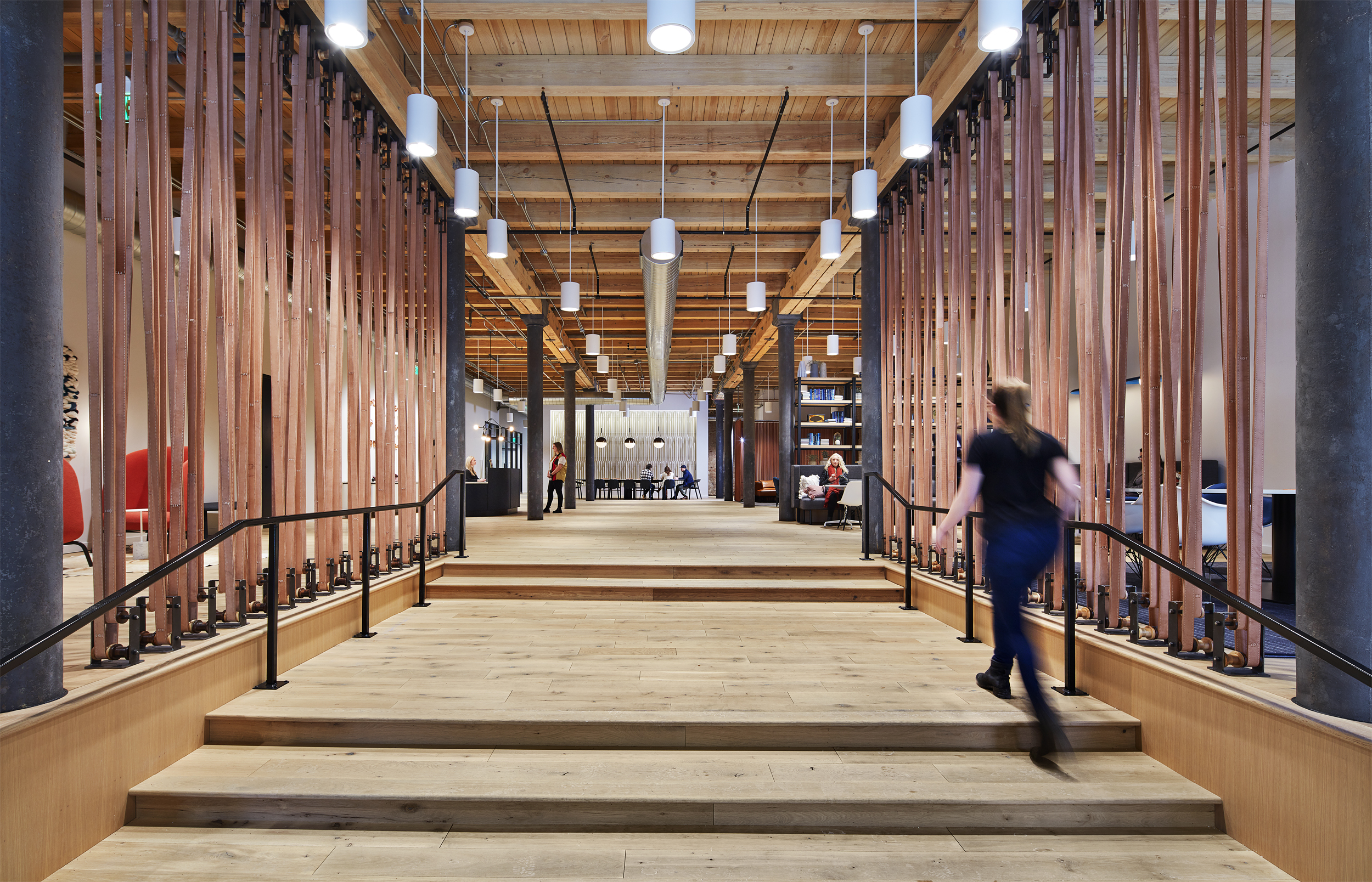
The Kickernick Building of today sits at a vibrant, multi-modal street corner at the edge of Downtown Minneapolis, and the Historic Warehouse District. The new design for the historical office building now sets a precedent of revitalization in the area by weaving the best of Kickernick’s past with today’s modern workplace. Custom features like a woven leather screen and custom felt panels speak to the history of the building. The exposing of the old materials and clean forms create a strong backdrop for new interventions of modern materials, ideas of overlap and intricate details.
The dynamic office lobby is now a hub for the building and neighborhood by inviting visitors to work, create, and socialize during the day and at night.
“Inspiration is drawn from the products that were once fabricated on site,” says Betsy Vohs, Founder, and CEO of Studio BV. “Details are reminiscent of the clean and industrial lines of the Mackinaw Coat and the Heffelfinger shoe and the craft of textiles and leather.”

When was the project completed?
November 2018
How much space (SF)?
120,000 SF
Was this new or renovated space?
Renovated space
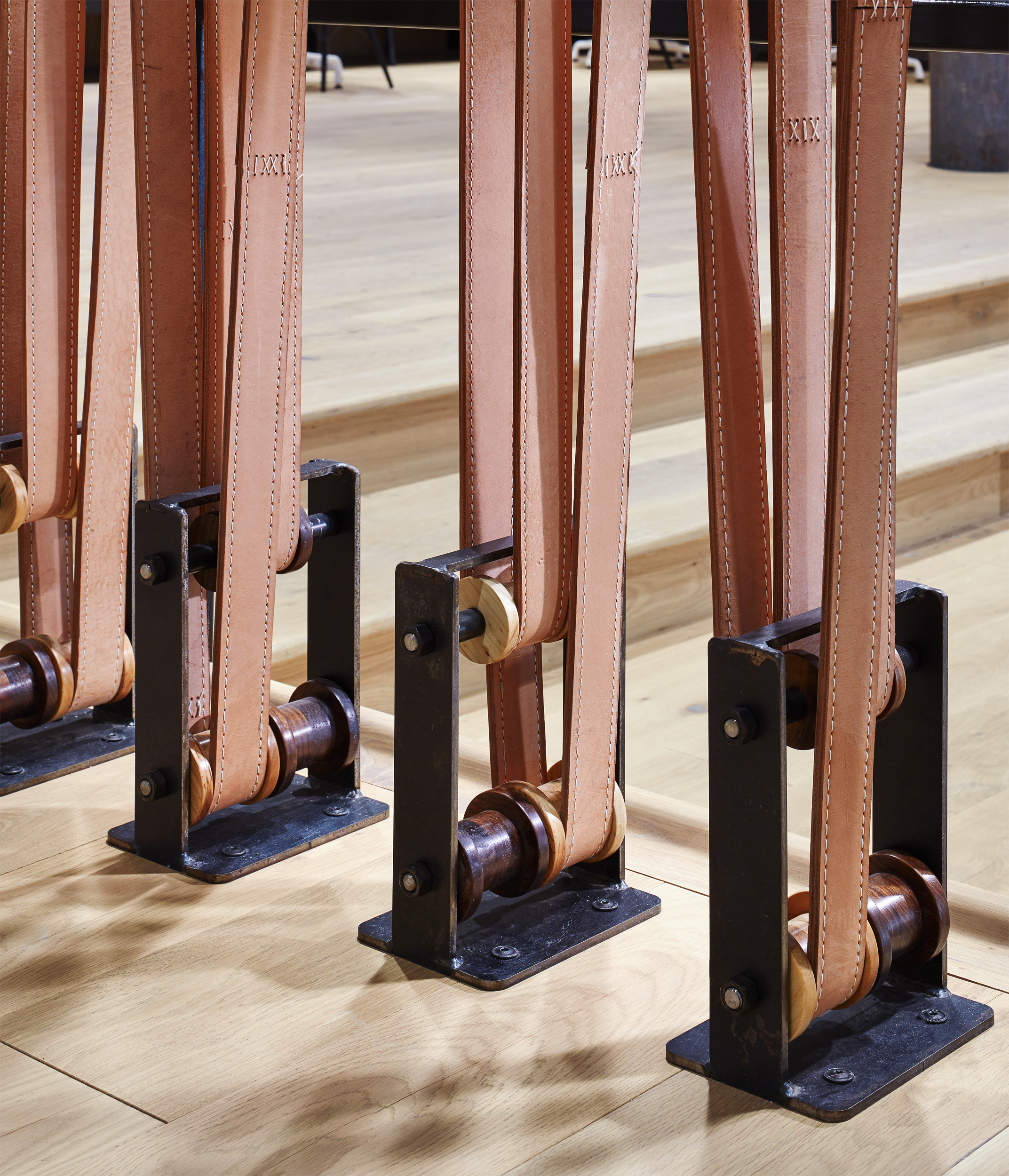
What is the average daily population?
900
Describe workspace types.
Open workspaces in common areas to support tenant spaces and to create a shared common lobby
What kind of meeting spaces are provided?
Open meeting spaces are located throughout the common areas with media
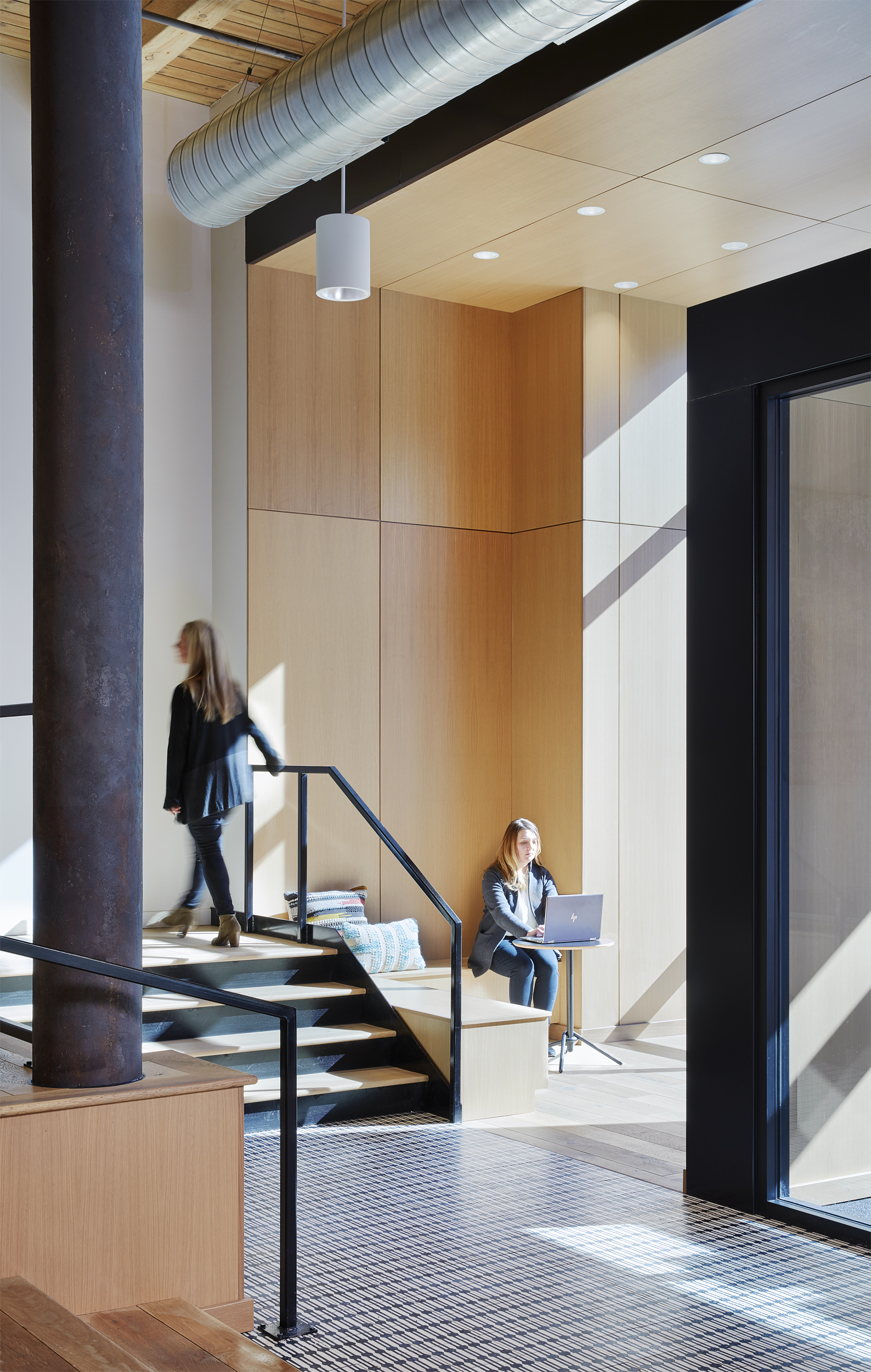
What other kinds of support space or amenity spaces are provided?
Bike storage and workrooms, shower facilities, coffee shop
What are the projects location and proximity to public transportation and/or other amenities?
Light rail stops in front of the building. Major bus lines run in front of the building. The space is at the center of transit in Minneapolis.
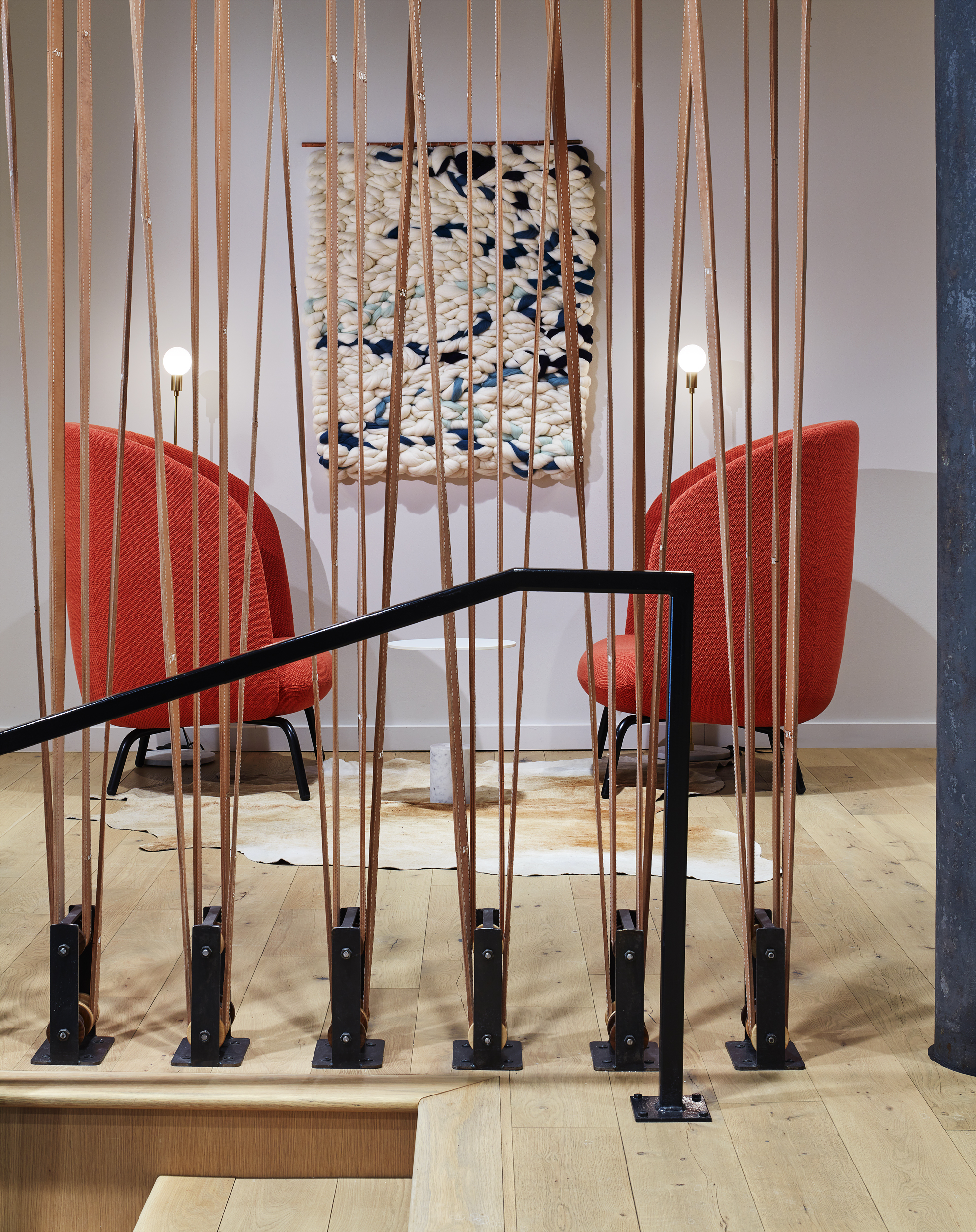
What kind of programming or visioning activities were used?
We did extensive research, visioning sessions, naming sessions and deep programming for the space.
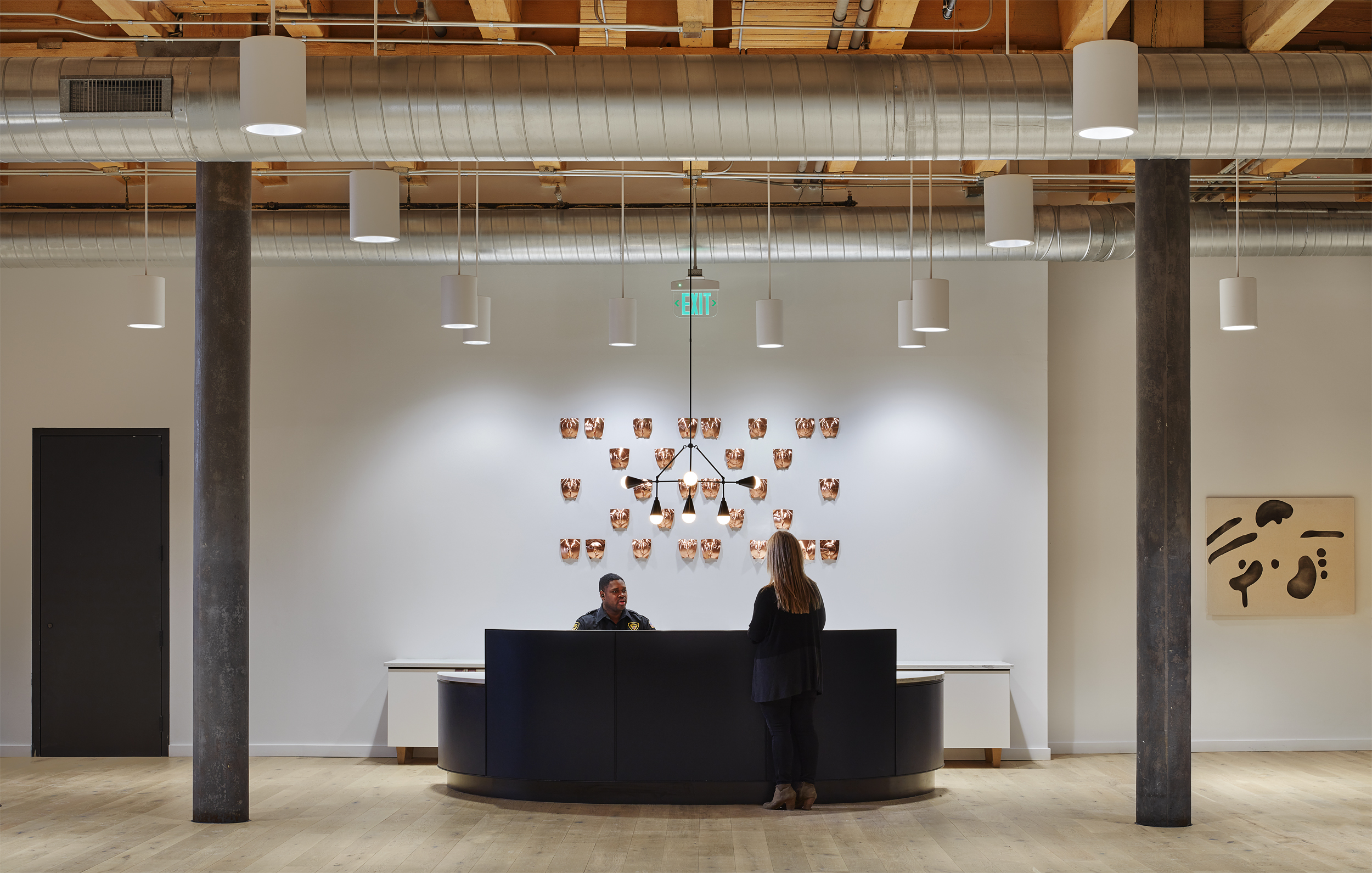
Were any pre-planning surveys conducted to get employee input?
We interviewed the tenants to determine what they wanted in the building, common spaces, and amenities.
Was there any other kind of employee engagement activities?
Interviews, observations, surveys

Were any change management initiatives employed?
Yes tours, meetings and website information.
Please describe any program requirements that were unique or required any special research or design requirements.
We were trying to create an identity for a building. No one knew where it was located or how it looked inside. It had no street presence and was a sad experience to visit.
We wanted to create a transparency to the street that welcomes the community into the space and create a new brand for the building and neighborhood.
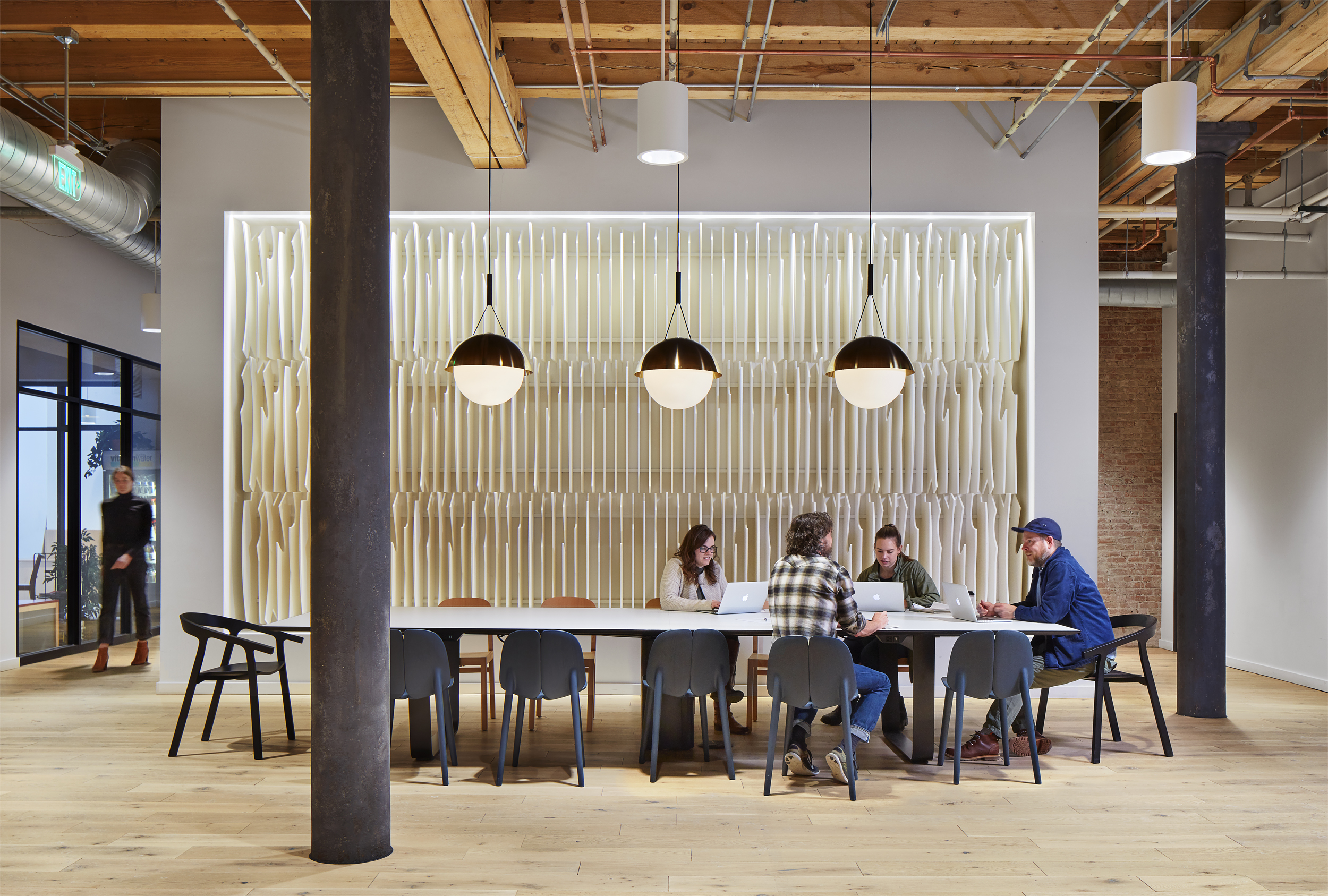
Was there any emphasis or requirements on programming for health and wellbeing initiatives for employees?
Adding showers and safe secure bike storage is huge. 30% of the occupant’s bike to work so that was a big improvement. New restrooms with low flow fixtures and access to daylight in all the common spaces and new HVAC were the main improvements.
Were there any special or unusual construction materials or techniques employed in the project?
We used materials that would complement the existing structure that was hidden in 100 years of construction work.
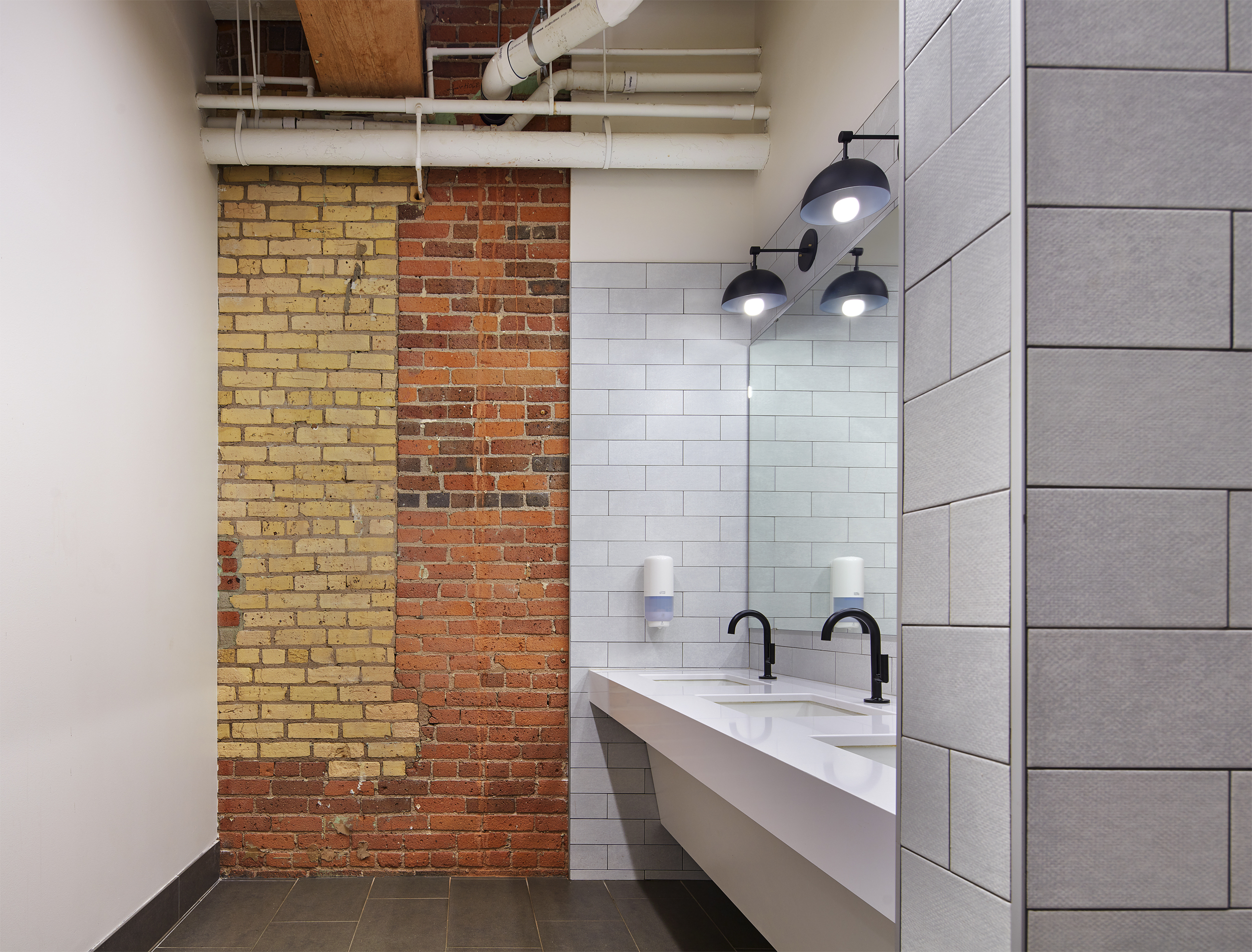
For specific examples, please describe the product, how it was used, and if it solved any specific problem.
We restored all the brickwork, columns and wood structure. This was important to create a new identity and to create a quality of the space that we wanted to offer the users.
What products or service solutions are making the biggest impact in your space?
We used Herman Miller, Muuto, Martin Bratrud, Senator, Hightower and Blu Dot Furniture.
What kind of branding elements were incorporated into the design?
We developed a whole signage system and custom graphics that tell the story of the fashion and craft-based history of the building. We used this history as inspiration for our leather screen and felt wall installation. Both are studies and rifts on the patterns of the clothes and shoes made in the building in its past.
What is the most unique feature of the new space?
The custom leather screen we created that guides you from the street into the building lobby. It’s warm and inviting and does the difficult job of pulling you deep into the space to get to the desk and elevator.
Are there any furnishings or spaces specifically included to promote wellness/wellbeing?
We used furniture that increased comfort and privacy. That helps wellbeing on a social and work capital basis.
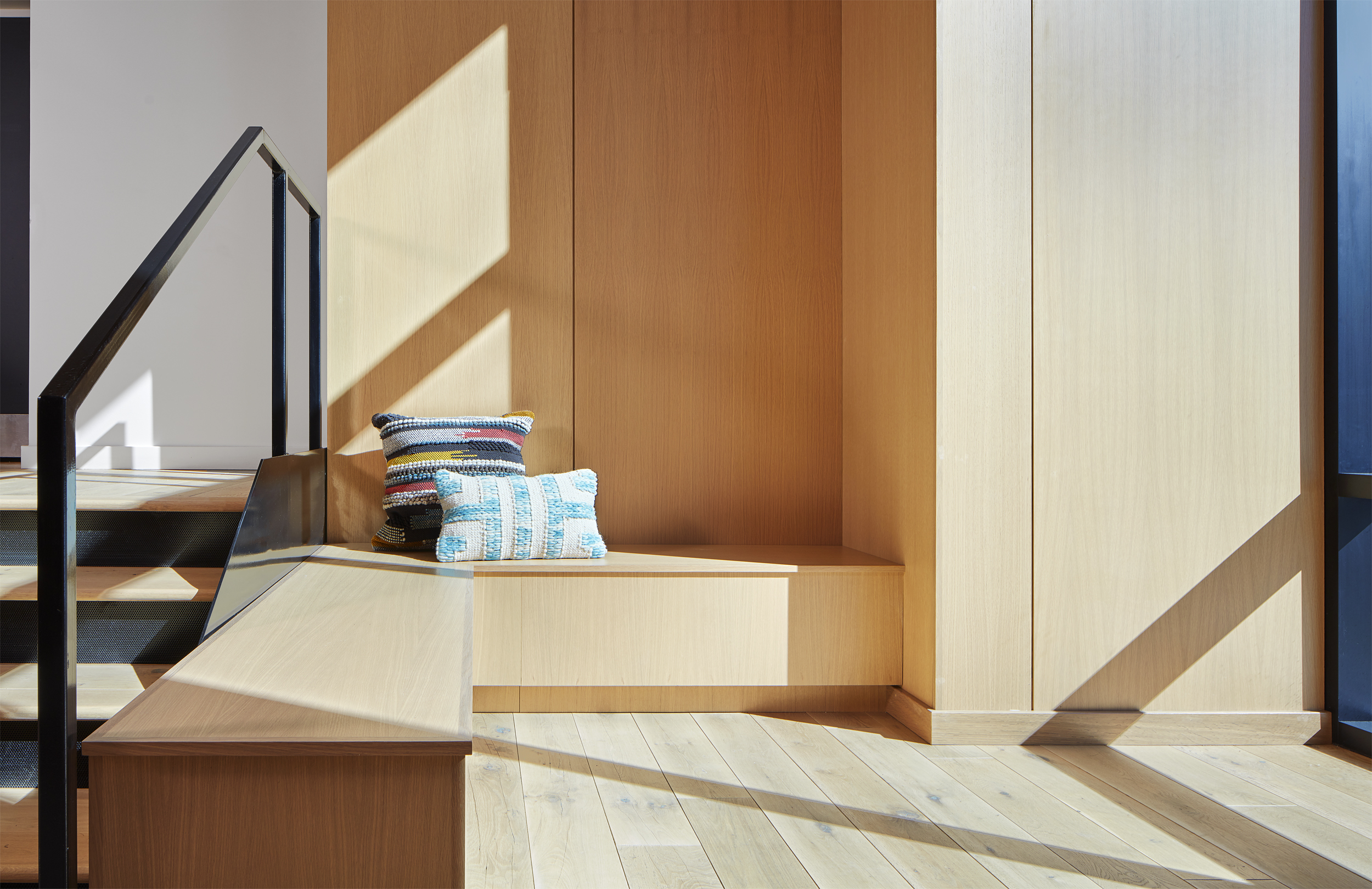
What kinds of technology products were used?
We used monitors to communicate traffic and signage.
How did the company communicate about the changes and moves?
Emails, renderings, construction tours and meetings.
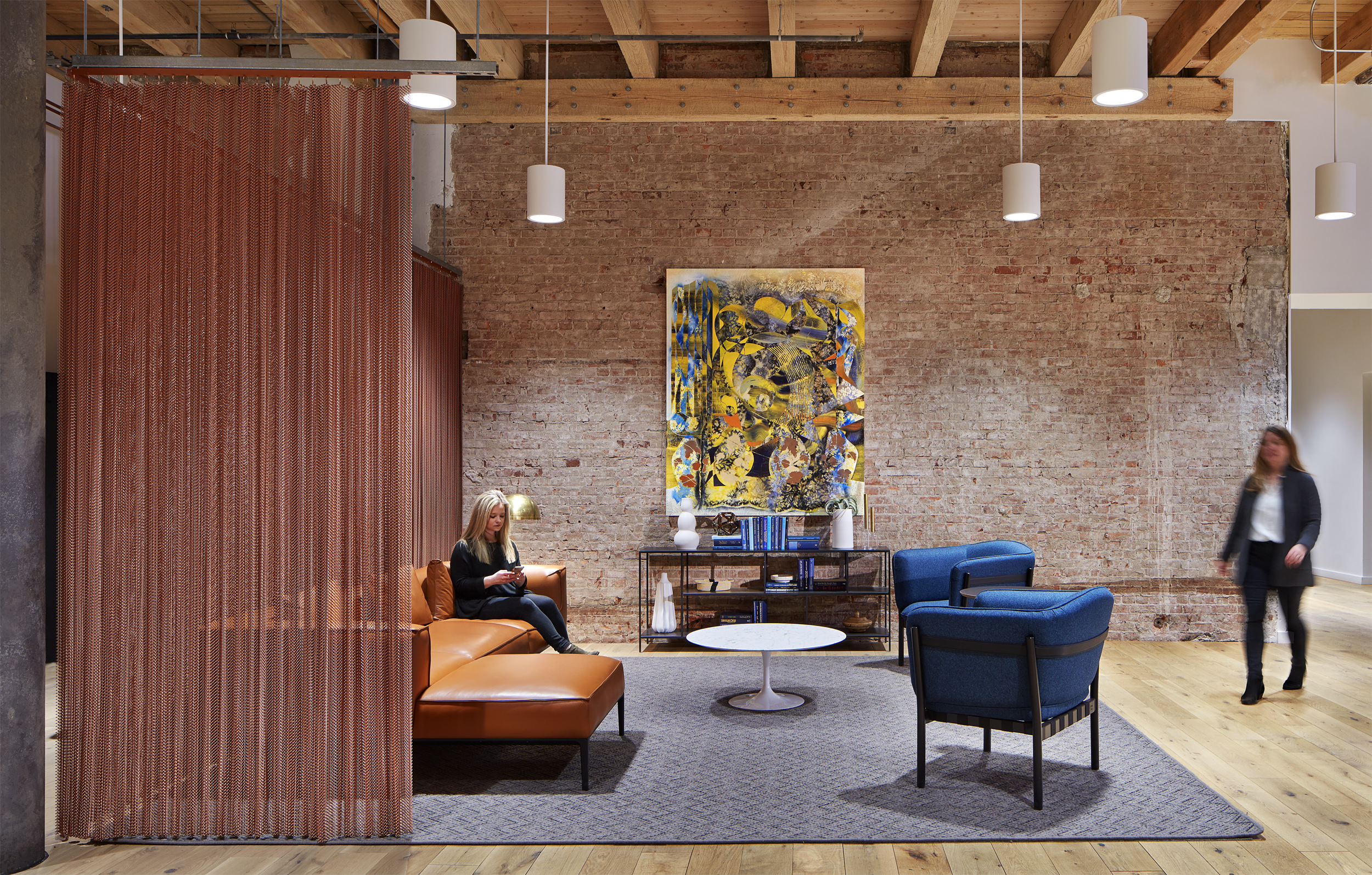
Were there post-occupancy surveys?
Yes, the companies are very happy and have said they use the space much more and have had better times recruiting new talent because of the lobby.
If so, what were the most surprising or illuminating or hoped-for results?
How many people cared about the artists in the space.
Tell us more!
Building & Interior Architect/Designer: Studio BV
Photography by Corey Gaffer Photography


